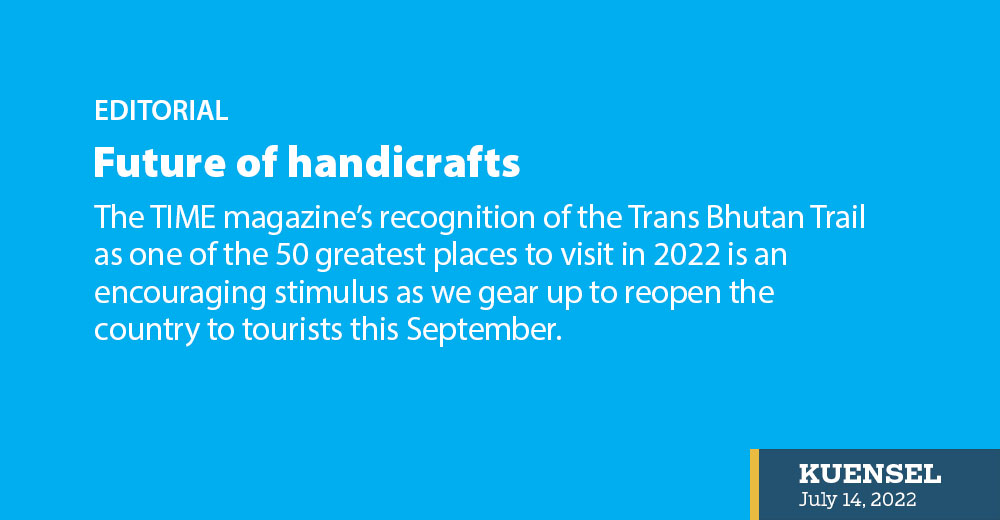The TIME magazine’s recognition of the Trans Bhutan Trail as one of the 50 greatest places to visit in 2022 is an encouraging stimulus as we gear up to reopen the country to tourists this September.
All agencies and firms in the tourism industry, including the small handicraft units, are preparing for the reopening. A recurring question being asked these days is how do we make our products high-end. For instance, our handicrafts.
Our textiles like yathra and woodwork like dappa have gained recognition over the years. However, while we cannot expect anything like the “explosion” that we are seeing in the movie or music industry, our handicrafts, in general, could do with more attention.
Shelves in most handicraft shops are filled with “Himalayan” products made in Nepal or India. These shops were successful during the tourist seasons mainly because there were not enough local alternatives. In that context, we are yet to meet the tourist demand, in terms of quality and variety.
One of the first things a guide does after tourists arrive in Thimphu is to take them to a handicraft shop and let them buy them traditional Bhutanese attire made of imported materials. Why not a locally handwoven sethra or mathra gho or kira?
One reason for the inadequacy, like in many other areas, has been the gap between our policies and action. We have decided that culture has to be preserved, promoted, and prioritised but not matched it in terms of investments or budget allocation. As a result, government offices have the latest model of printers while our traditional artisan struggle with crude implements and settings.
But there has been much more done in recent years. The institutes of zorig chusum, both government and private-run, have brought a better focus on traditional art and skills. Attempts are also made to reach out to weavers and craftsmen working with wood and cane, although it comes more from the pressure from tourists and individual efforts. Some elderly craftsmen worry their trades might vanish with them.
Today, we have the policy, the need, a ready market, and the knowledge. We will have to have the will. To look for a yardstick our traditional crafts have to reach out to the younger generation. While it would be unrealistic to expect handicrafts to excite our youth as much as mobile phones excite them it is important that the tradition conveys an image of change and modernity, from study tours to scholarships to a more attractive working environment.
Around the world, traditional crafts have been digitalised and traditional tools have been vastly improved. The industry can reap huge benefits and transform to suit the taste of young minds by riding on modern technology. Fewer people will choose to endure the drudgery when those outside their workplace are embracing technological innovation such as fab-labs or super fab-labs and sophisticated production.
If we can commit the cost of a few pool vehicles it can revolutionise the facilities of our craftsmen.


